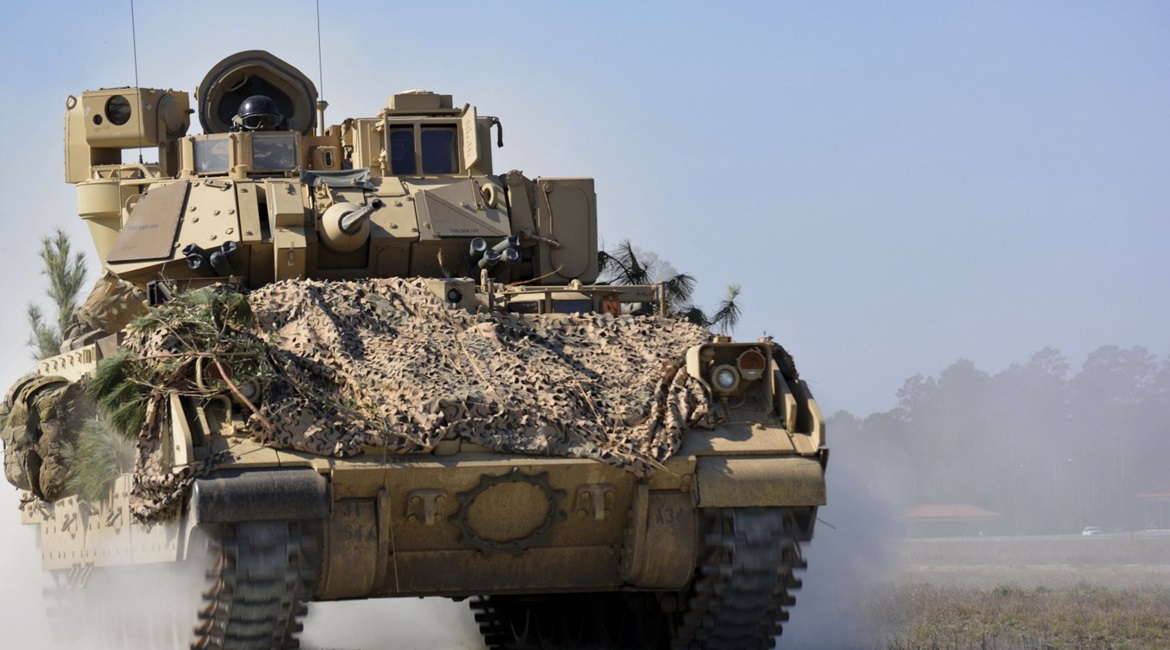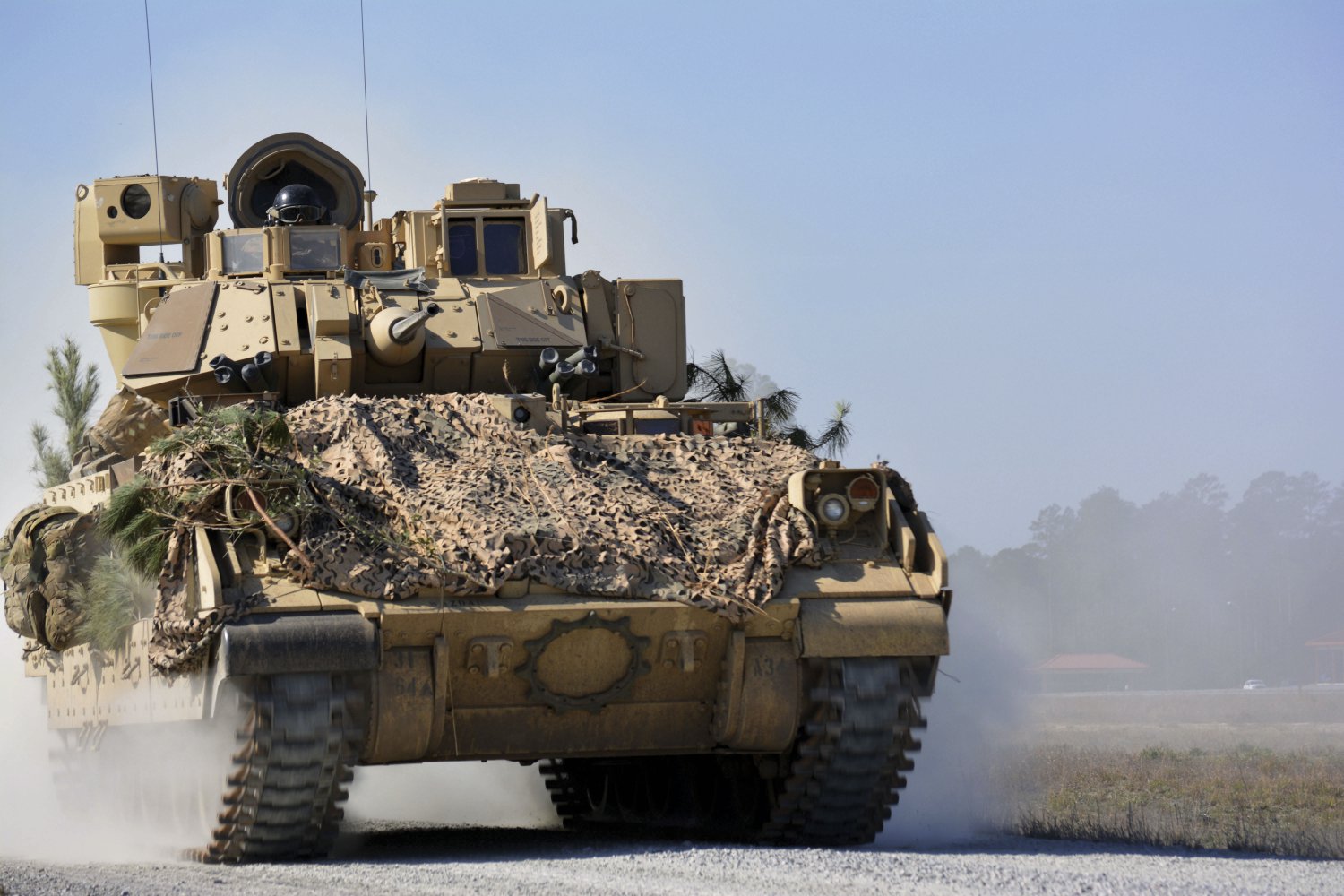
‘Survivability’ will be the primary requirement in the US Army’s latest attempt to replace its M2 Bradley Fighting Vehicle fleet, with ’transportability’ coming in at a distant seventh place.
US Army leaders have unveiled additional details of their revamped Optionally Manned Fighting Vehicle (OMFV) competition that will slow down the development process and delay fielding the first tranche of vehicles from fiscal year 2026 (FY 2026) until FY 2028.
One of the top challenges for the service last time around was striking the balance between survivability and transporting heavily armoured vehicles on aircraft. This time, the service said transportability will take a back seat according to a 9 April industry day document that ranks the army’s nine OMFV ‘characteristics’ starting with the most critical – survivability, mobility, growth, lethality, weight, logistics, transportability, manning, and training.
“The OMFV will serve as the army’s infantry fighting vehicle (IFV) tasked to manoeuvre through the enemy’s disruption zone and deliver soldiers to their dismount point unharmed,” the service wrote. “The OMFV will provide direct fire support to soldiers by detecting and destroying targets at a range beyond the enemy’s capability.”

A M2A3 Bradley Fighting Vehicle from 1st Battalion, 64th Armor Regiment manoeuvres during a company combined arms live-fire exercise at Fort Stewart, Georgia, in February 2017. The US Army has unveiled a tentative roadmap to field a new Bradley replacement fleet in 2028. (US Army)
Although the document did not detail a list of vehicle specifications or cite previous requirements like two OMFVs must fit inside a C-17, or a 50 mm cannon threshold requirement, the service did provide some industry with initial guidance to consider.
Looking to read the full article?
Gain unlimited access to Janes news and more...




